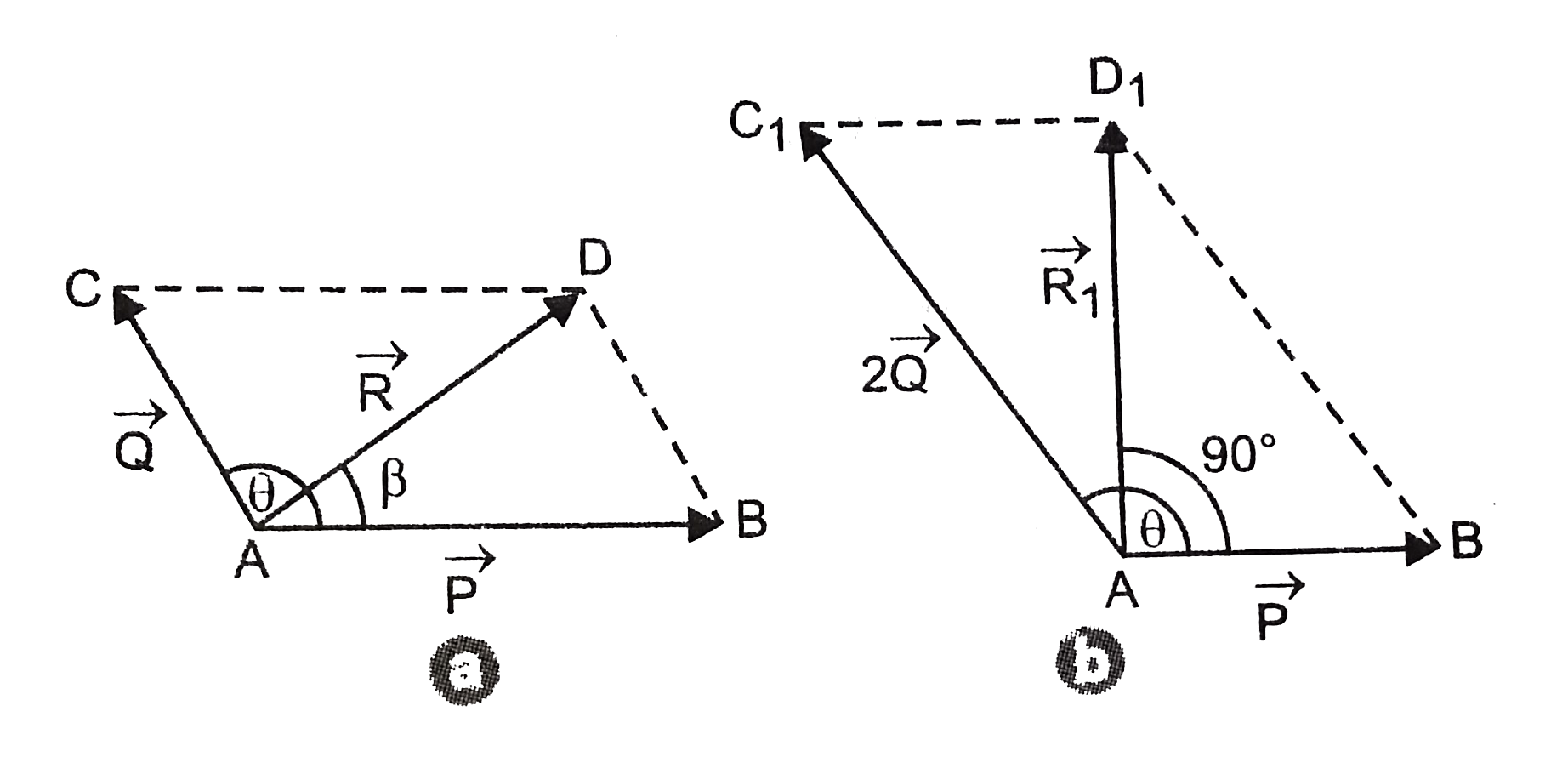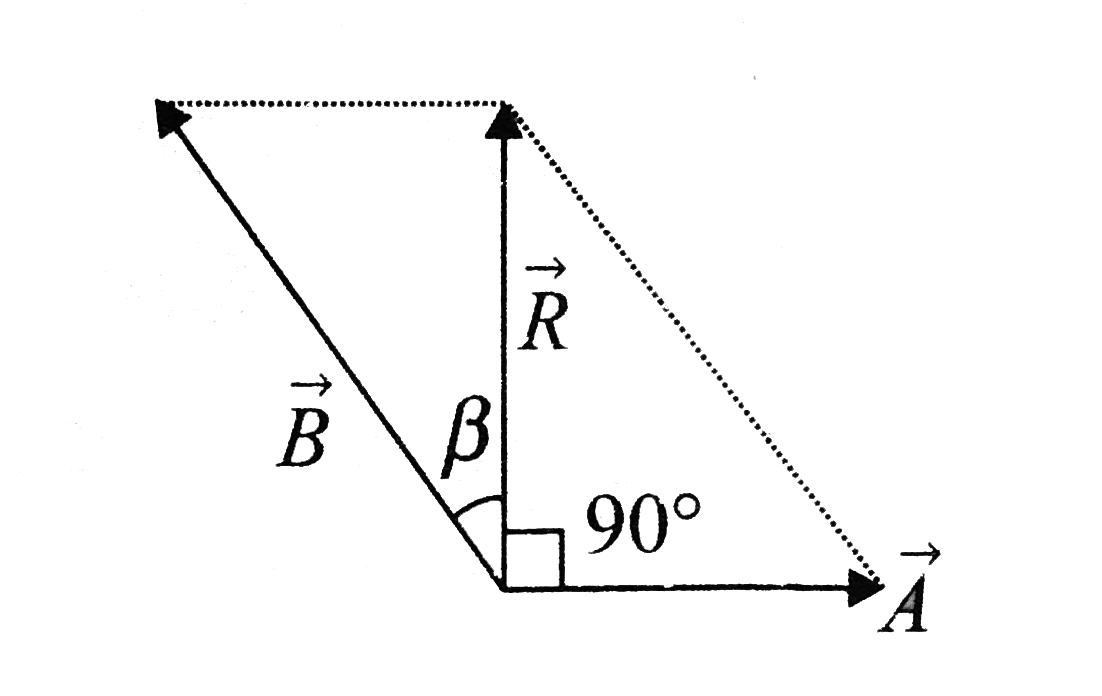The resultant of two vectors →P and →Q is →R. If the magnitude of →Q is doubled, the new resultant vector becomes perpendicular to →P. Then, the magnitude of →R is equal to
P+Q
Q
P
P+Q2
The correct Answer is:B
 .
.
tanβ=QsinθP+Qcosθand
R2=P2+QPQcosθ ….(i)
When (Q)isdoub≤d,restant––––– vec R_1isperpendica––r→ vec P.Fig.2(CF).51(b).The<br> R_1^2 = P^2 + 4 Q^2 + 4 PQ cos thea....(ii)<br>Fromright∠d△ BAD_1,wehave<br> R-1^2 = ( 2 Q)^2 - P^2 = 4 Q^2 -P^2<br>Pu∈gthisvalue∈(ii),we≥t<br> Q^@ + 2 - P^2 =P^2 + 4 Q^2 + 4 PQ cos theta<bR>or P^2 + 2 PQ cos theta =0<br>Pu∈gthisvalue∈(ui),we≥t<br> R^2 = (P^2 +2 PQ cos theta =0<br>Pu∈gthisvalue∈(i),we≥t.<br> R^1 = (P^2 + 2 PQ cos theta) + Q^2 =0 + Q^2 =Q^2 or R=Q.
Topper's Solved these Questions
- KINEMATICSBOOK - PRADEEPCHAPTER - KINEMATICSEXERCISE - 4 NCERT multiple Choice
10 Videos
- KINEMATICSBOOK - PRADEEPCHAPTER - KINEMATICSEXERCISE - 4 NCERT Integer type
4 Videos
- KINEMATICSBOOK - PRADEEPCHAPTER - KINEMATICSEXERCISE - 2 NCERT multiple
15 Videos
- GRAVIATIONBOOK - PRADEEPCHAPTER - GRAVIATIONEXERCISE - Assertion-Reason Type Questions
19 Videos
- LAWS OF MOTIONBOOK - PRADEEPCHAPTER - LAWS OF MOTIONEXERCISE - Assertion- Reason Type Questions
17 Videos
Similar Questions
Knowledge Check
The resultant of two vectors →P and →Q is →R. If →Q is doubled then the new resultant vector is perpendicular to →P. Then magnitude of →R is :-
AP2−Q22PQBQCPQDP+QP−QThe resultant →Pand→Q is perpendicular to →P. What is the angle between →Pand→Q?
Acos−1(P/Q)Bcos−1(−P/Q)Csin−1(P/Q)Dsin−1(−P/Q)if →P×→R=→Q×→R, then
A→P=→QB→P and →Q need not be equalCThere are infinite number of possibilities for →P (If →Q and →R are given ) which satisfy this relationship.D→p and →Q must be coplanar
The resultant of →Pand→Q is →R. If magnitude of →Q is doubled, magnitude of resultant is also doubled,when direction of →Q is reversed from initial condition then magnitude of resultant is again doubled, find P:Q:R.
View SolutionTwo vectors →a&→b have equal magnitudes of 10 m ,. Find the magnitude and direction of the resultant vector .
View SolutionTwo vectors →P and →Q are added, the magnitude of resultant is 15 units. If →Q is reversed and added to →P resultant has a magnitude √113 units. The resultant of →P and a vector perpendicular →P and equal in magnitude to→Q has a magnitude
View SolutionThe maximum value of the magnitude of the resultant of two vectors →Pand→Q is 24 units and the minimum value of the magnitude of their resultant is 4 units. What is the ratio of the magnitudes of the vectors →Pand→Q ?
View SolutionThe resultant of two vectors →A and →B is perpendicular to the vector →A and its magnitudes is equal to half of the magnitudes of vector →B (figure). The angle between →A and →B is

View Solution
